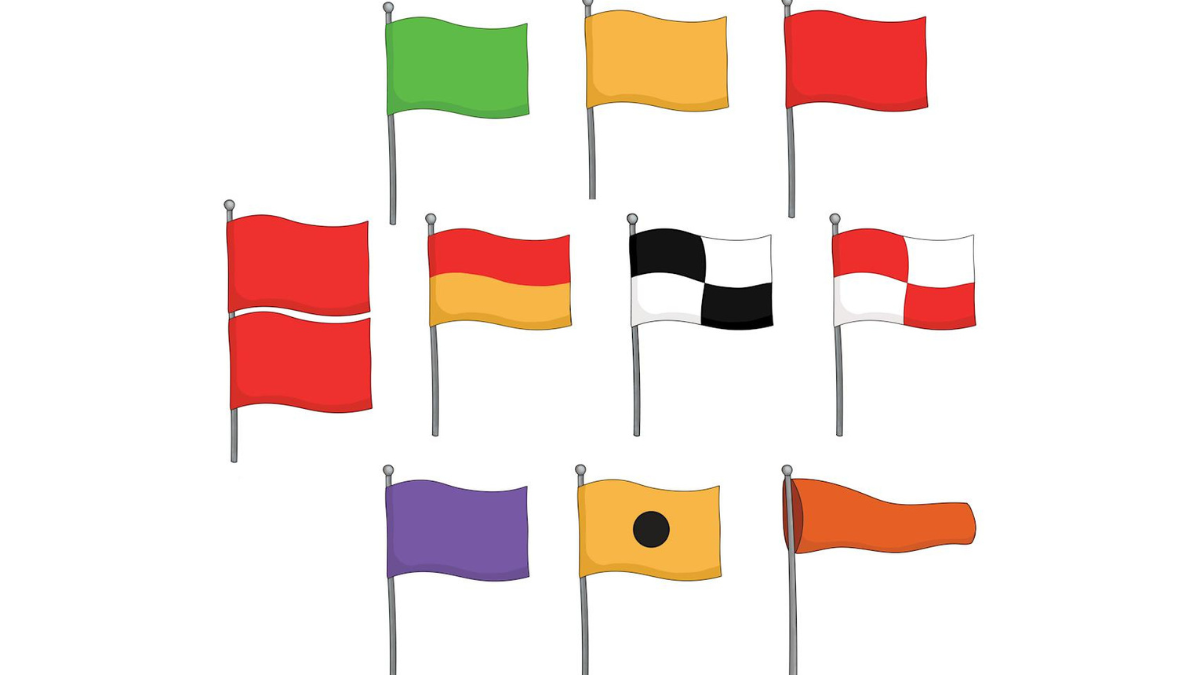Welcome to the beautiful shores of Destin Beach flags! Known for its stunning white sands and crystal-clear waters, Destin is a paradise for beach lovers. But with great beauty comes great responsibility, especially when it comes to beach safety. That’s where the Destin Beach flag system comes into play. Understanding these flags can mean the difference between a fun day at the beach and a dangerous situation.

What Are Beach Flags?
Beach flags are visual signals used to indicate current water conditions and potential hazards. They help beachgoers understand the level of safety and necessary precautions to take while enjoying the water. The concept of beach flags has been around for decades, evolving as a standardized system to ensure the safety of those visiting coastal areas.
The Destin Beach Flags System
Destin’s beach flag system is straightforward yet highly effective. The flags are color-coded to represent different safety levels and conditions:
- Green: Low hazard
- Yellow: Medium hazard
- Red: High hazard
- Double Red: Water closed to the public
- Purple: Dangerous marine life
Green Flags
Meaning and Significance
A green flag indicates that conditions are generally safe for swimming and other water activities. However, this does not mean there is no risk at all.
Safety Tips for Green Flag Days
Even on green flag days, it’s important to:
- Stay alert and aware of your surroundings.
- Supervise children closely.
- Avoid swimming alone.
Yellow Flags
Meaning and Significance
A yellow flag signifies moderate surf and/or currents. Extra caution should be exercised.
Safety Tips for Yellow Flag Days
On yellow flag days:
- Swim near a lifeguard.
- Use flotation devices if needed.
- Keep an eye on children and weaker swimmers.
Red Flags
Meaning and Significance
A red flag indicates high surf and strong currents. Swimming conditions are dangerous.
Safety Tips for Red Flag Days
When you see a red flag:
- Avoid entering the water if possible.
- Stay close to shore if you must swim.
- Pay attention to lifeguard instructions.
Double Red Flags
Meaning and Significance
Double red flags mean the water is closed to the public due to extreme hazards.
Safety Tips for Double Red Flag Days
On double red flag days:
- Do not enter the water under any circumstances.
- Follow any additional guidance from local authorities.
Purple Flags
Meaning and Significance
A purple flag warns of dangerous marine life, such as jellyfish or sharks.
Safety Tips for Purple Flag Days
During purple flag days:
- Stay out of the water if you can.
- Be vigilant and watch for any signs of marine life.
- Report any sightings to lifeguards immediately.
How to Stay Updated on Beach Flag Conditions
To stay informed about current beach flag conditions:
- Check online resources like local weather websites and apps.
- Listen to updates from local authorities and lifeguards.
- Pay attention to flag changes throughout the day.
Common Misconceptions About Beach Flags
There are several misconceptions about beach flags, such as:
- Green flags mean there are no risks at all. (False, always stay alert.)
- Purple flags mean the water is completely unsafe. (Not necessarily, but caution is required.) Understanding the true meanings helps in making safer decisions.
The Role of Lifeguards in Beach Safety
Lifeguards are essential to beach safety. They:
- Monitor water conditions.
- Rescue swimmers in distress.
- Provide first aid and emergency response.
- Communicate with beachgoers about hazards and safety tips.
Tips for Staying Safe at the Beach
To ensure your safety:
- Always swim in designated areas.
- Heed lifeguard warnings and flag signals.
- Stay hydrated and protect yourself from the sun.
- Have a plan for emergencies, including knowing where the nearest lifeguard station is.
Environmental Considerations
Weather and marine life significantly impact beach conditions. Changes in tides, storms, and the presence of marine animals can alter safety levels quickly.
read this also- Parents Drown in Florida Beach Rip Currents While Vacationing with 6 Children.
Community Involvement in Beach Safety
Local communities play a crucial role in beach safety through:
- Volunteer lifeguard programs.
- Beach clean-ups to maintain a safe environment.
- Educational campaigns about beach safety practices.
Conclusion
Understanding the Destin Beach flag system is vital for a safe and enjoyable beach experience. By paying attention to these flags and following safety guidelines, you can help ensure that your time at the beach is both fun and safe. Stay informed, stay safe, and enjoy the beauty of Destin Beach!
FAQs
What should I do if I see a red flag at the beach?
If you see a red flag, it’s best to stay out of the water due to high surf and strong currents. If you must swim, stay close to shore and follow lifeguard instructions.
How often are beach flag conditions updated?
Beach flag conditions are updated as often as necessary, typically several times a day, to reflect the most current safety information.
Can I swim when there’s a purple flag?
Swimming is allowed, but be aware of the potential presence of dangerous marine life. Take extra precautions and stay vigilant.
What does a double red flag mean?
A double red flag means that the water is closed to the public due to extreme hazards. Do not enter the water under any circumstances.
How can I help promote beach safety in my community?
Get involved in local safety initiatives, volunteer for beach clean-ups, and educate others about the importance of understanding beach flags and following safety guidelines.

I Am The Author Of This Lovely Blog…
This beautiful blog is written by me. I love writing blogs and sharing my experiences with my dear readers. My name is Bharat. I love visiting new places, eating delicious food, and enjoying beaches and waterfalls.

